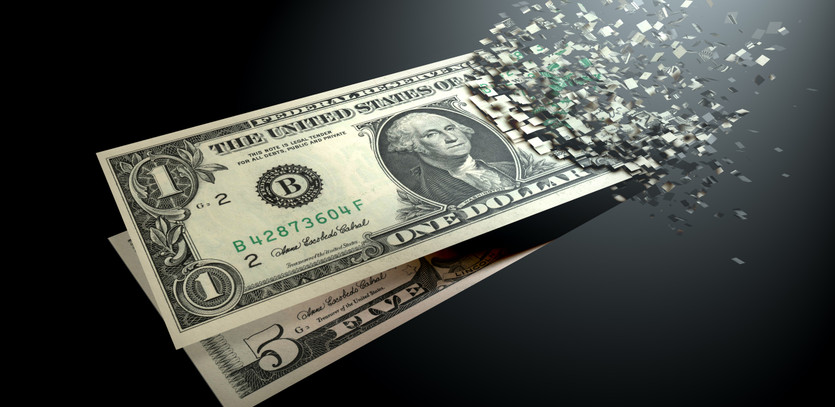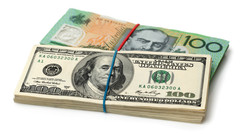Understanding the value of the U.S. dollar isn't simply a matter of examining exchange rates. To gain a full perspective, one must also look at Treasury notes and foreign exchange reserves. Let's explore these three measurement methods to forecast the dollar's direction.
Exchange Rates: A Comprehensive Guide
What Are Exchange Rates?
Exchange rates illustrate the dollar's worth compared to other countries' currencies. It provides a basis for how much foreign currency a dollar can buy. The U.S. Dollar Index is the most commonly used method for this assessment.
How Do Exchange Rates Change?
The foreign exchange (forex) market governs currency values, and fluctuations are constant. Multiple factors influence these rates, including:
- Central bank interest rates
- National debt levels
- Economic strength
A strong combination of these factors will usually bolster the currency value. Most countries employ flexible exchange rates, letting forex trading set the currency's value.
How Does the U.S. Government Influence Exchange Rates?
The Federal Reserve possesses various monetary tools to sway the dollar's strength. While not directly controlling exchange rates, these tools enable the government to influence them.
Tracking the U.S. Dollar Against Other Currencies
The U.S. dollar's value can be compared to several other currencies like the Indian rupee, Japanese yen, Canadian dollar, and British pound. A historical perspective of the dollar measured against the euro since 2002 reveals the following changes:
- 2002-07: 40% drop in dollar value as U.S. debt increased by 60%.
- 2008: Dollar's strength during the global financial crisis.
- 2009-22: Fluctuations due to factors like the Greek debt crisis, President Trump's policies, Brexit, the COVID-19 pandemic, and U.S. economic recovery.
Treasury Notes: An Insight
The Role of Treasury Notes
Treasury notes also shape the dollar's value. Sold by the U.S. Department of the Treasury at fixed interest rates, these notes' demand can move in sync with the dollar.
How Demand Influences Yield and Value
High demand leads to lower yields, as investors pay above face value. Conversely, low demand increases the yield, causing low dollar demand until it triggers a resurgence.
Historical Impact of Treasury Notes on the Dollar
A decade-long overview of Treasury note events shows:
- 2008: Yield drop with rising dollar demand.
- 2009-20: Variations due to economic conditions, inflation fears, quantitative easing, and recession fears.
- 2021: Yields and the dollar both affected by economic recovery and pandemic-related factors.
Foreign Currency Reserves and the Dollar
Foreign Currency Reserves
The U.S. dollar plays a crucial role in the foreign currency reserves of many governments, forming the third factor that affects its value. Governments often accumulate dollars by exporting more goods and services than they import, thus receiving dollars in payment. Countries like Japan and China are some of the largest holders of U.S. dollars, as holding onto dollars keeps their own currency values lower.
Changes in Dollar Value and Their Effects
As the dollar's value declines, other countries' reserves decrease in value as well. This makes them less inclined to hold dollars, leading them to diversify into other currencies like the euro, yen, or Chinese yuan. Consequently, the demand for the dollar drops, further devaluing it.
By the third quarter of 2021, foreign governments held $7.1 trillion in U.S. dollar reserves, constituting 55% of the total allocated reserves of $12.83 trillion. This was a decrease from the peak of 66% in 2015. Comparatively, euros made up only 20% of reserves, and Chinese renminbi constituted a mere 2%.
How the Dollar Impacts the U.S. Economy
Effects on Exports and Oil Prices
A stronger dollar makes American-made goods more costly and less competitive relative to foreign-produced items, thereby reducing U.S. exports and hampering economic growth. Simultaneously, it leads to a drop in oil prices, as oil transactions are conducted in dollars. A strengthened dollar, therefore, allows oil-producing countries to decrease oil prices without impacting profit margins in their local currencies.
An Illustrative Example
Consider the exchange rate of 3.75 Saudi riyals per dollar. With a barrel of oil priced at $100 (or 375 riyals), a 20% strengthening of the dollar against the euro also strengthens the riyal by 20%. Thus, Saudis can buy French pastries at a lower price than before, eliminating the need to limit oil supply even when prices fell to $30 a barrel in 2015.
A Note on Money's Value
Money's value is determined by the amount of goods or commodities it can purchase at a given time. When prices for essential items like food or gas rise, the value of money correspondingly shrinks, as the same amount can now purchase less.
The Value of the Dollar Over Time
The Impact of Inflation and Debt
Today's dollar has less purchasing power than in the past due to inflation. Additionally, the increasing U.S. debt burdens foreign investors, leading them to gradually shift away from dollar-denominated investments over the long term.
Individual Investment Strategies
For individual investors, a well-diversified portfolio containing foreign mutual funds offers protection against these trends.
Trends in Dollar Value (2002-2022)
Decline (2002-2011)
During this period, the dollar declined for three main reasons:
- Growing U.S. debt
- Sequestration
- Worldwide diversification
Strengthening (2011-2016)
The dollar strengthened due to factors including:
- Concerns over the Greek debt crisis
- Struggles in the European Union to stimulate growth
- Economic reform in China in 2015
- The dollar's status as a safe haven
- Continued purchasing of dollars by China and Japan
Fluctuations Amid Uncertainty (2016-2022)
Recent years have witnessed fluctuations in the dollar's value, influenced by events such as President Trump's trade wars, the 2020 global COVID19 pandemic, and varying inflation fears.





